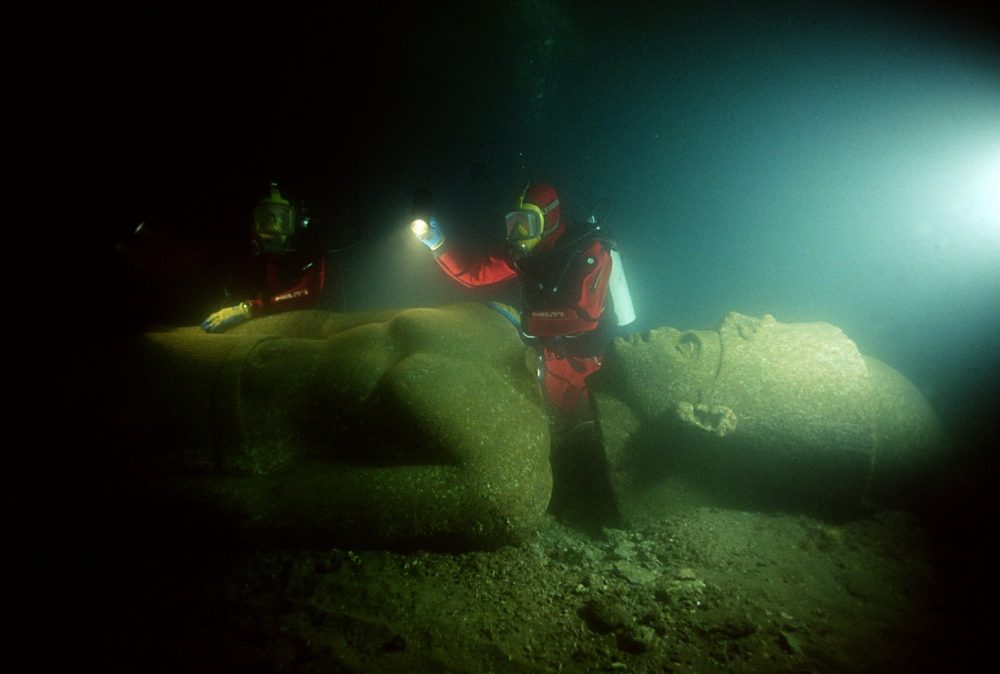The sunken city of Heracleion is ancient Egypt's real-life Atlantis; an important city that was devoured by the sea, thousands of years ago.
Many ancient cities around the world were mentioned in ancient texts but never found. Some of them are thought to have been no more than myths. Others are believed to have existed but were eradicated by nature or wars.
Egypt is home to countless mysteries. The ancient city of Heracleion was one. Many ancient writers mentioned the city in antiquity, including Herodotus, Strabo, and Diodorus. It was there where Paris and Helen of Troy are thought to have traveled just before the Trojan war began. They sought refuge at Heracleion from Menelaus.

Although well documented, no one had been able to find the city, which was thought to have been no more than a myth. Heracleion’s legendary beginnings go back to as early as the 12th century BC, and several ancient Greek historians mention it. The city’s importance grew particularly during the waning days of the Pharaohs.
Heracleion was built in the Nile Delta and was intersected by various canals, home to great harbors and anchorages. Its wharves, houses, and beautiful temples were linked using ferries, bridges, and pontoons. We could compare the city of Heracleion to Venice in one way or another.
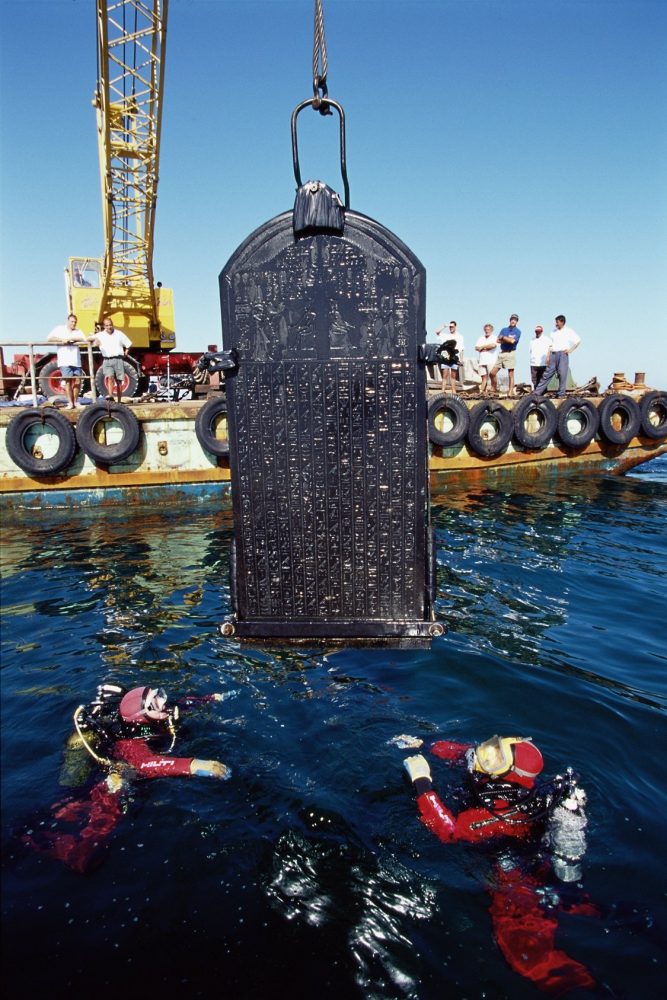
The city was a prominent trading port, and in the late period of ancient Egypt, the city became the country’s main port for international trade, collection of taxes, and commerce.
By the second Century BC, Heracleion’s importance diminished, and Alexandria replaced the city as Egypt’s main port.
Heracleion was weekend by rising sea levels, tsunamis, and earthquakes. By the end of the second century BC, most likely after a severe flood, the ground upon which the city was erected succumbed to soil liquefaction, and the might city sank beneath the ocean.
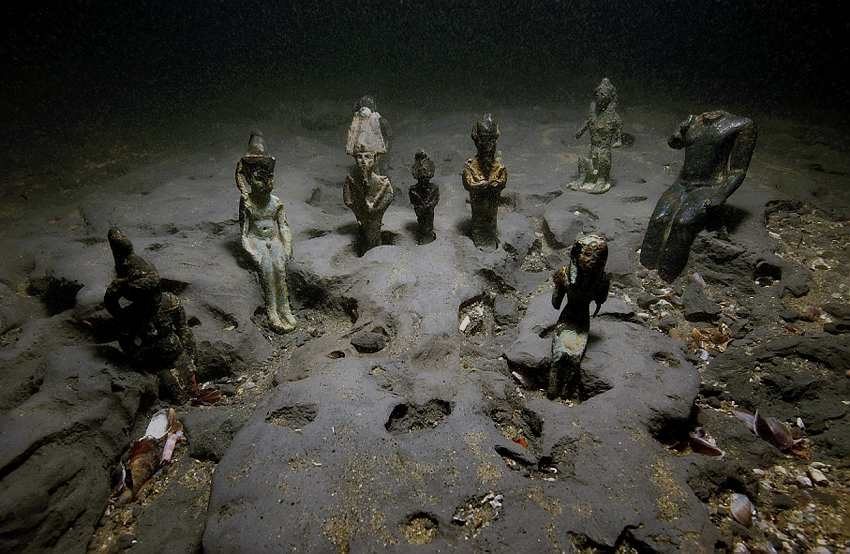
Thonis – its original ancient Egyptian name – eventually became one of the richest cities in all of Egypt.
Then, with the conquest of Alexander the Great in the third century BC, its name was changed to Heracleion, in honor of Heracles, who, according to mythology, was the first to arrive in the city.
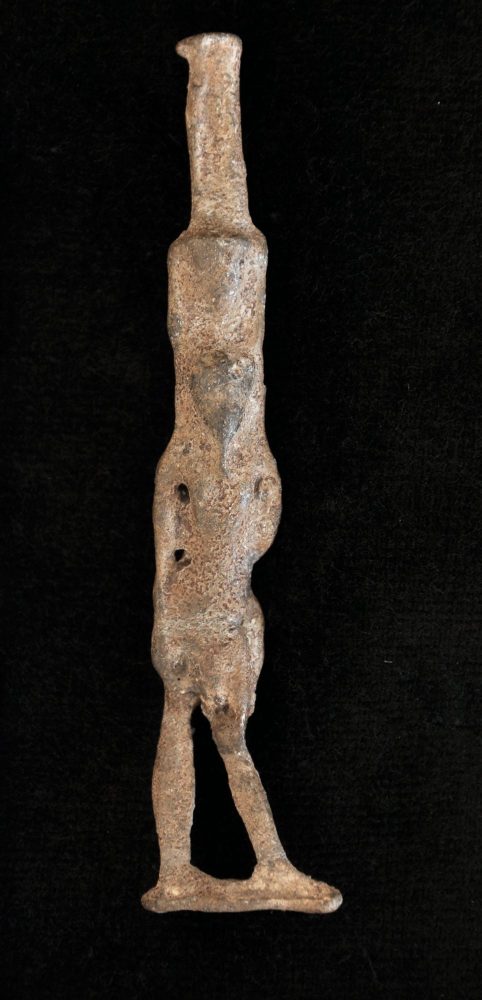
Many consider Heracleion the real-life Atlantis: years after the city’s sinking, its existence was forgotten, and Heracleion became a myth.
Until very recently the site had been known only from a few literary and epigraphic sources, one of which interestingly mentions the site as an emporion, just like Naukratis. — British Museum.
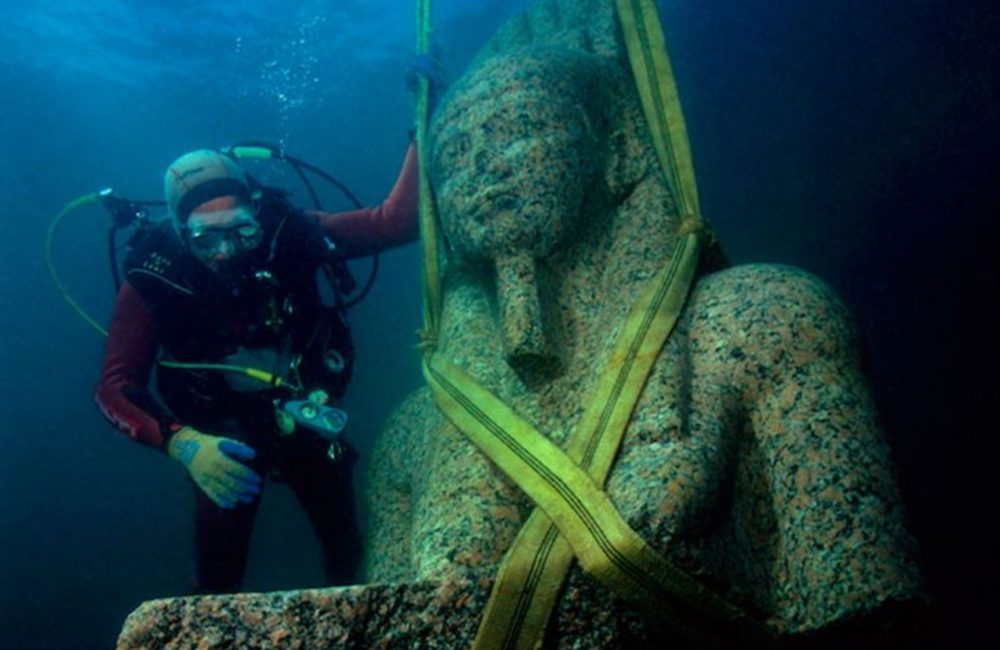
Although the sunken city was revealed between 1999 and 2000, back in 1933, an RAF commander flying over the Abu Qir Bay observed ruins beneath the water.
At that time, not much was known about the city of Thonis-Heracleion, and most historians believed that Thonis and Heracleion were two separate cities, not one, both located on what is now the Egyptian mainland.
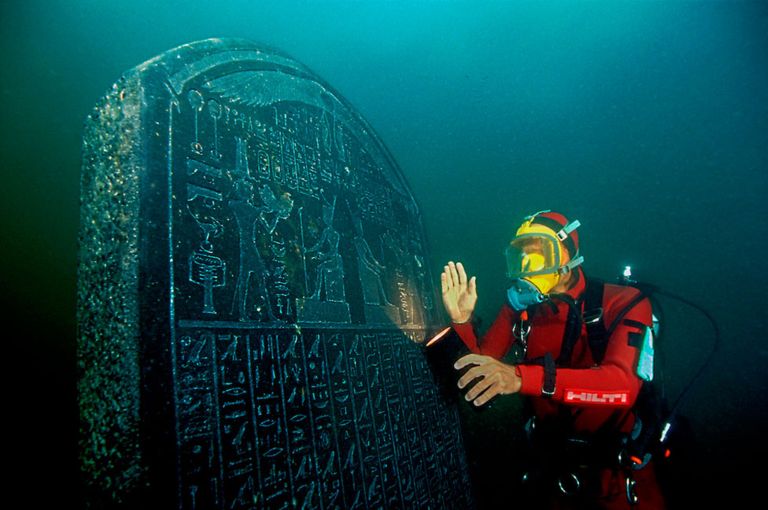
Years went by, and not much attention was paid to the ruins, which continued guarding their secret patiently.
Then, in 1999, its ruins–and mysteries–were revealed when French underwater archaeologist Franck Goddio located and explored the sunken city after a five-year search that began back in 1994.
Archeological excavations have revealed an ancient city of immense value. Numerous discoveries from the site suggest that the city’s most active and prosperous period can be traced back from the 6th to the 4th century BC, with finds pottery and coins appearing to stop at the end of the 2nd century BC.
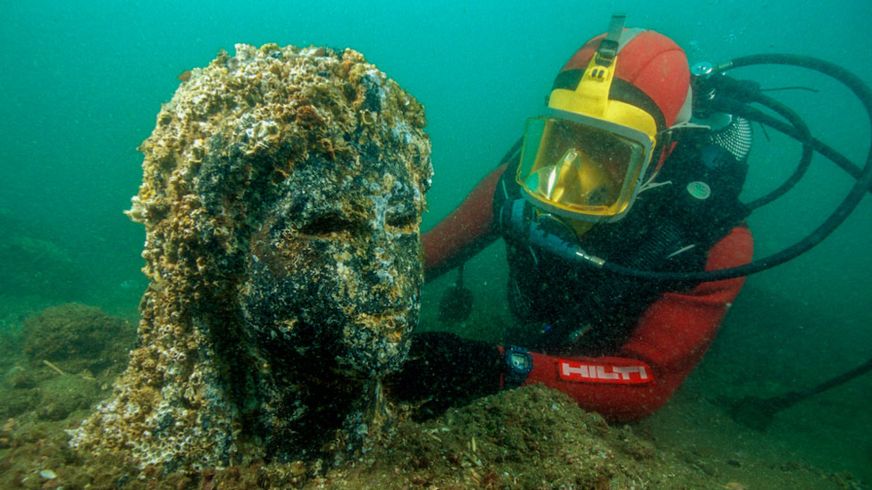
Goddio’s finds have also revealed incomplete statues of the god Serapis and the queen Arsinoe II. According to scholars, no more than 5% of the city’s total area was explored by the archaeologist.
The first vestiges of the ancient city of Thonis-Heracleion are located at a distance of 6.5 kilometers from the current coastline. Divers and underwater archaeologists have examined as many as 64 ancient Egyptian ships dating between the eighth and second century B.C., many of which appear to have been expressly sunk.
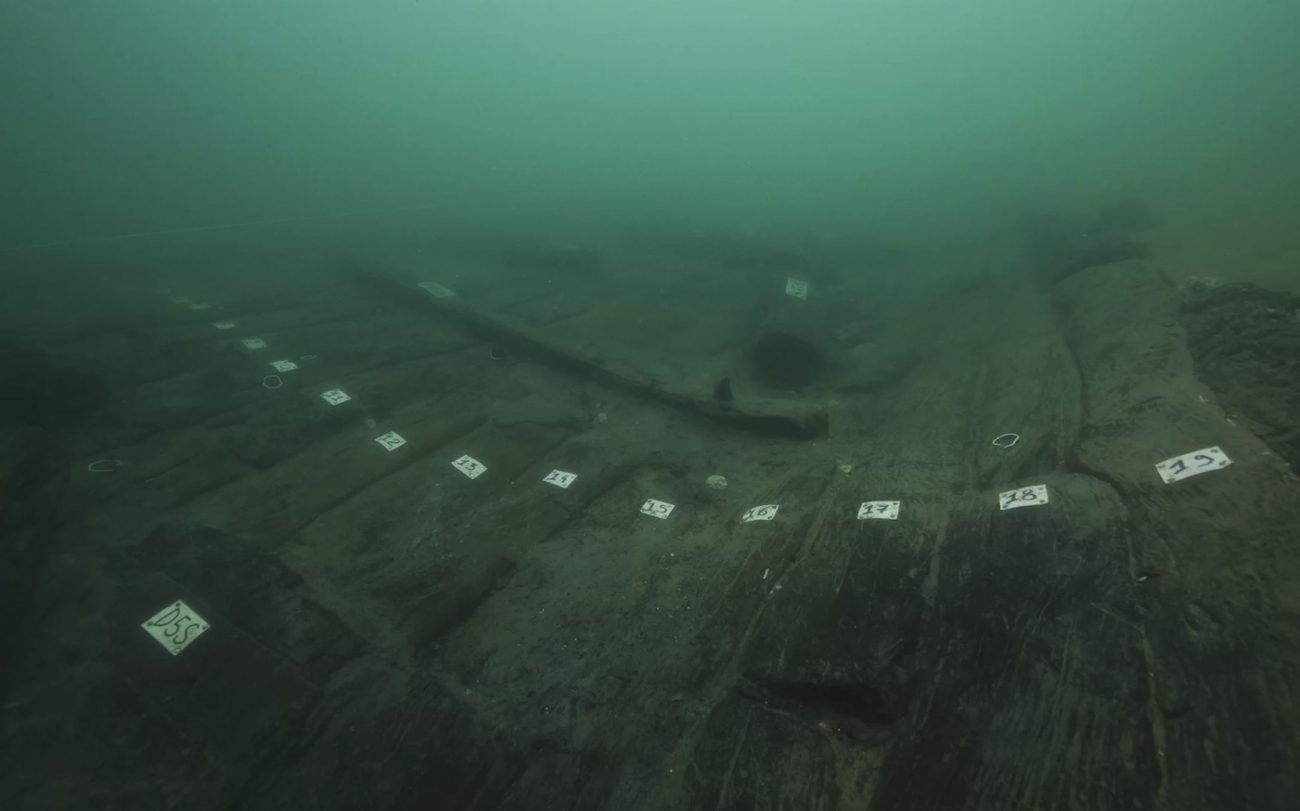
The boats lie in the mud of the seabed and, according to the researchers, have an excellent state of conservation.
700 different types of ancient anchors have been detected that could represent the largest nautical collection in the ancient world.
In 2010, Goddio and his team revealed an ancient Egyptian baris, a kind of ancient Nile riverboat. The ship was excavated, and its design was eerily similar to the ship’s description, given by Hereoduts in 450 BC. Until the discovery of the baris, the ship was considered a myth.
Experts are still exploring the city.
In July of 2019, underwater archeologists revealed a smaller Greek temple, ancient granite columns, treasure-laden ships, and bronze coins from the reign of Ptolemy II had been discovered at the sunken city, dating back to the 3rd and 4th centuries BC.
In addition to the city’s commercial and religious importance, Heracleious also played an important political role in ancient Egypt. The city was home to an ancient temple where the Pharaoh would receive, from the supreme god, Amun, the title of his power.
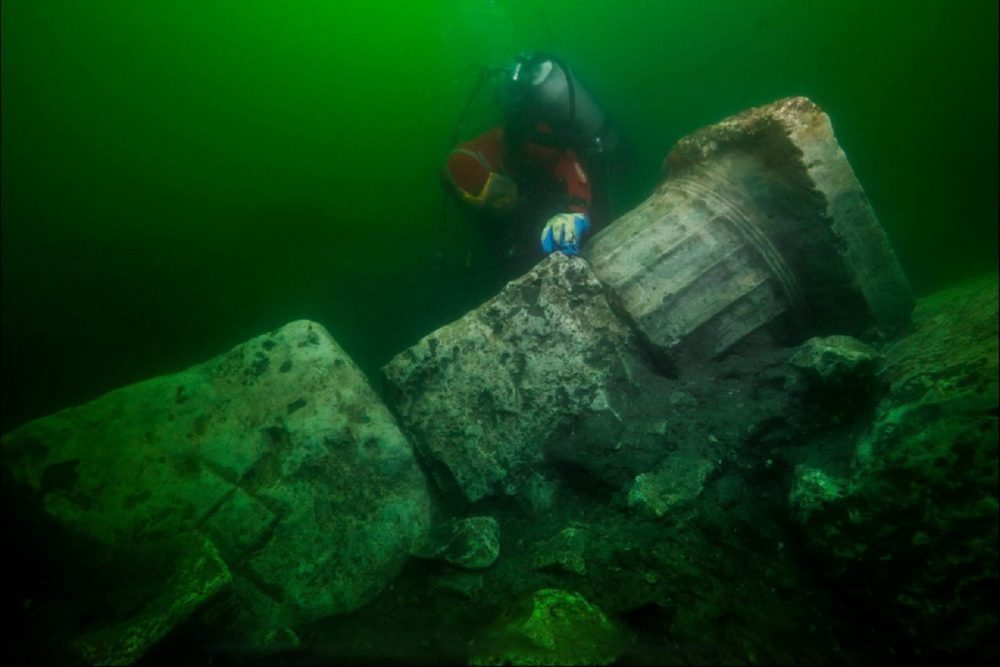
Franck Goddio led the underwater expedition.
Experts also discovered a destroyed underwater temple, believed to have been the city’s main temple, off Egypt’s northern coast.
Despite the city’s incredible relevance, nothing prevented it from sinking, something that scientists attribute to the fact that it was built on the unstable sediments of the Nile Delta, which may have given way to an earthquake or other natural disasters.
Ironically, that same soil that would have led to the destruction of Heracleion was what allowed it to be preserved so incredibly under the sea: the Nile clay was deposited on top of the remains of the city, preserving them.
Join the discussion and participate in awesome giveaways in our mobile Telegram group. Join Curiosmos on Telegram Today. t.me/Curiosmos

